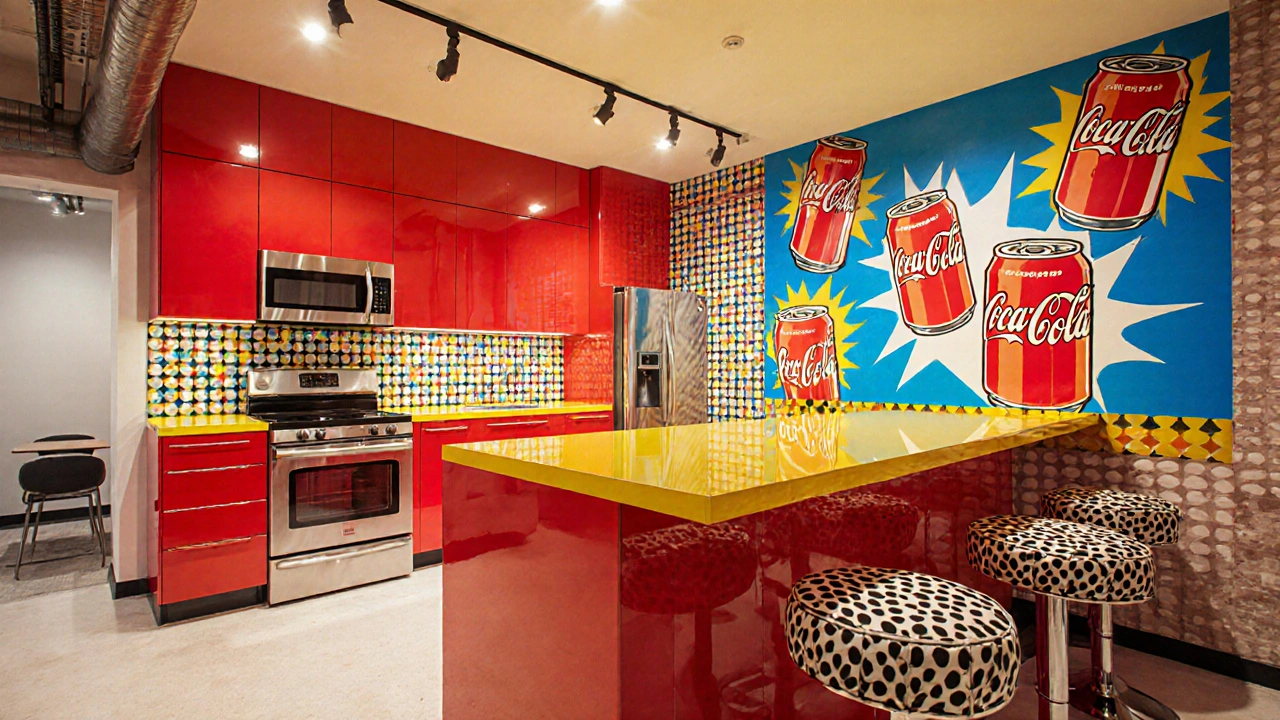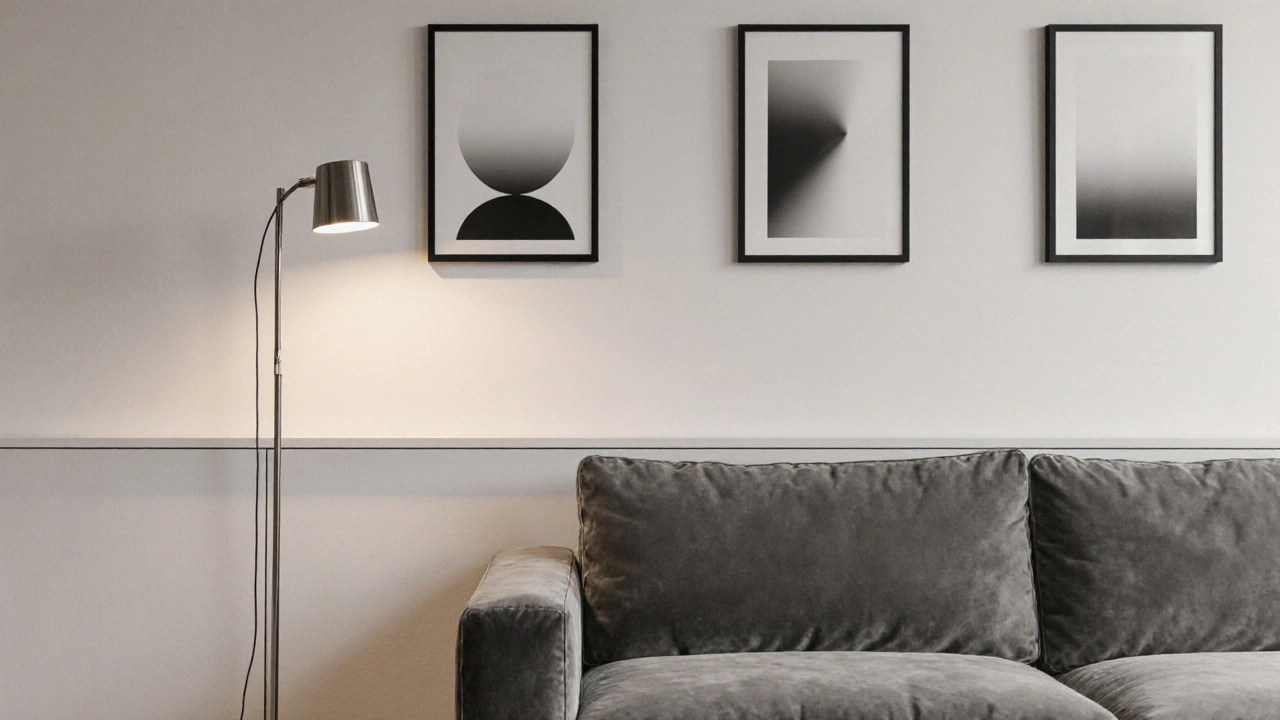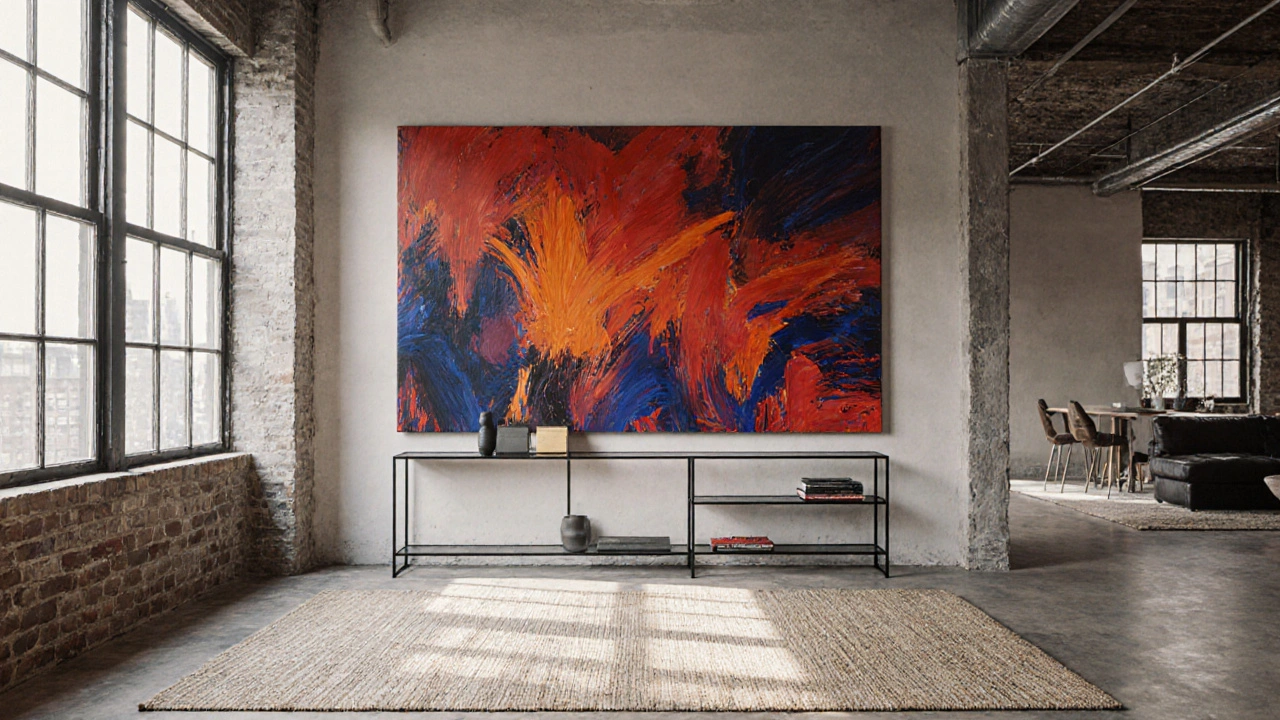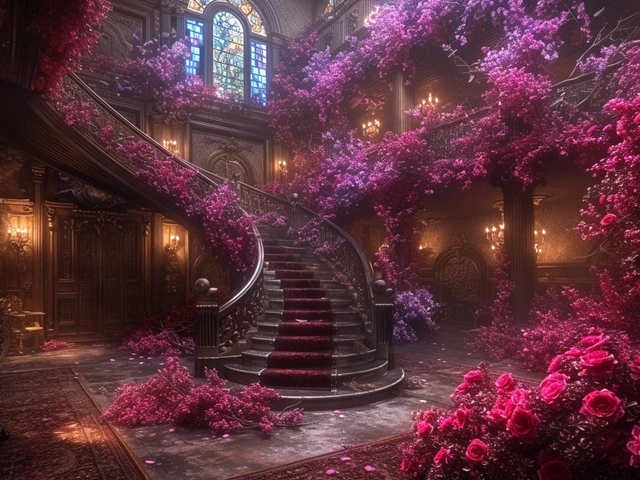Modern Art Style Match Calculator
Discover which modern art style best complements your space based on room type and size. This tool uses principles from the article to help you make informed design choices.
Recommended Art Style
Why this style works for your space
When we talk about Modern Art is a movement that breaks traditional rules, emphasizing abstraction, experimentation, and new materials, we’re really looking at a toolbox for Interior Design is a discipline that arranges space, color, texture, and function to create lived experiences. The clash-or the harmony-between these two fields can turn a plain room into a storytelling canvas.
Understanding Modern Art
Modern art isn’t a single style; it’s a timeline that starts in the late 19th century and stretches into today’s contemporary scene. Artists abandoned realism, opting for abstraction, bold colors, and unconventional materials. This rebellion gives designers a fresh visual language. Think of Abstract Expressionism as a post‑World War II movement that values spontaneous, gestural brushstrokes-perfect for adding emotional depth to a loft’s open‑plan area.
Other key strands include Pop Art is a mid‑20th‑century style that pulls imagery from advertising, comics, and popular culture, which brings a playful, instantly recognizable vibe, and Minimalist Art is a movement focused on simplicity, limited color palettes, and geometric forms that meshes well with sleek, Scandinavian interiors.
How Interior Design Uses Art
Designers treat art as a functional object-one that influences modern art trends while also guiding spatial decisions. Here are three ways art drives interior choices:
- Scale and Proportion: A massive canvas can anchor a spacious living room, while a series of smaller works can fill a narrow hallway without overwhelming it.
- Color Theory: Artists often experiment with bold palettes. Designers borrow these hues to set moods-cool blues for calm, fiery reds for energy.
- Texture and Material: Modern sculptures might incorporate metal, glass, or reclaimed wood, prompting designers to echo those textures in furniture or finishes.
Choosing the Right Style: A Quick Comparison
| Style | Best Spatial Fit | Typical Color Palette | Key Design Cue |
|---|---|---|---|
| Abstract Expressionism | Large open‑plan areas | Rich, saturated tones | Bold brushwork as focal point |
| Pop Art | Kitchens, cafés, youthful lofts | Primary colors, high contrast | Graphic motifs echoed in textiles |
| Minimalist Art | Small apartments, zen‑like spaces | Monochrome or muted neutrals | Geometric frames matching furniture lines |
| Sustainable Installations | Eco‑focused homes | Earthy greens, reclaimed wood tones | Materials repeated in flooring or lighting |
Use this table as a cheat‑sheet when you’re scouting pieces. The right pairing saves you from costly trial‑and‑error.

Practical Tips for Integrating Art
- Start with a focal point. Choose one statement piece-maybe a Statement Piece is a large artwork that draws immediate visual attention-and build the room around it.
- Use a gallery wall. Group smaller works in a cohesive grid. Keep frames uniform for a clean look or vary them for an eclectic vibe.
- Mind lighting. Install adjustable track lights or picture lights. Artistic Lighting is a lighting strategy that enhances texture and color in artworks can make a muted piece pop.
- Match materials. If a sculpture features brushed steel, consider stainless-steel hardware on cabinets.
- Play with texture. Pair a rough, mixed‑media canvas with a soft velvet sofa to create tactile contrast.
Common Pitfalls & How to Avoid Them
Even seasoned designers slip up. Here are the most frequent mistakes and quick fixes:
- Oversaturation. Too many bold pieces can feel chaotic. Balance with neutral walls or understated furniture.
- Scale mis‑match. A tiny abstract work looks lost on a massive wall. Use multiples or a larger canvas.
- Neglecting cohesion. Randomly placed art can make the room feel disjointed. Choose a unifying theme-color, shape, or era.
- Improper hanging height. Art should sit at eye level (about 57‑60 inches from the floor). Adjust for seated vs. standing spaces.
- Ignoring sustainability. Today's buyers care about provenance. Opt for artists who use reclaimed or low‑impact materials; note this in your design brief.

Real‑World Examples
Case 1: Urban Loft - A 2,000 sq ft loft in Portland used a massive Abstract Expressionist piece as the living‑room anchor. The designer echoed the painting’s fiery reds in a custom‑woven rug and chose black metal shelving to mirror the brushstroke energy.
Case 2: Sustainable Family Home - A suburban house incorporated a Sustainable Installation made from reclaimed barn wood. The same wood was used for ceiling beams, tying the artwork to the architecture and reinforcing the eco‑friendly narrative.
Case 3: Minimalist Studio - A compact studio apartment featured a series of small Minimalist Art prints in monochrome frames. The uniform frames aligned with the room’s clean lines, making the space feel larger and more organized.
Frequently Asked Questions
How big should an artwork be for a standard living room?
A good rule of thumb is that the artwork (or grouped pieces) should cover about two‑thirds of the wall’s width. Measure the wall, subtract 10‑15 inches on each side, and use that as your maximum width.
Can modern art work in traditional interiors?
Absolutely. Pair a modern abstract piece with classic furniture, but keep the surrounding décor muted to let the art shine. The contrast creates visual interest.
What lighting is best for colorful paintings?
Use LED track lights with a CRI (Color Rendering Index) of 90+ placed at a 30‑45 degree angle. This reduces glare and brings out true colors.
How do I incorporate art on a budget?
Look for limited‑edition prints, emerging local artists, or high‑quality reproductions. Frame them yourself to save on cost.
Is it okay to mix different modern art styles in one room?
Yes, as long as you anchor the mix with a unifying element-such as a consistent color, frame material, or a shared theme.
By treating modern art as a design partner rather than a decorative afterthought, you’ll create interiors that feel purposeful, fresh, and uniquely yours.




